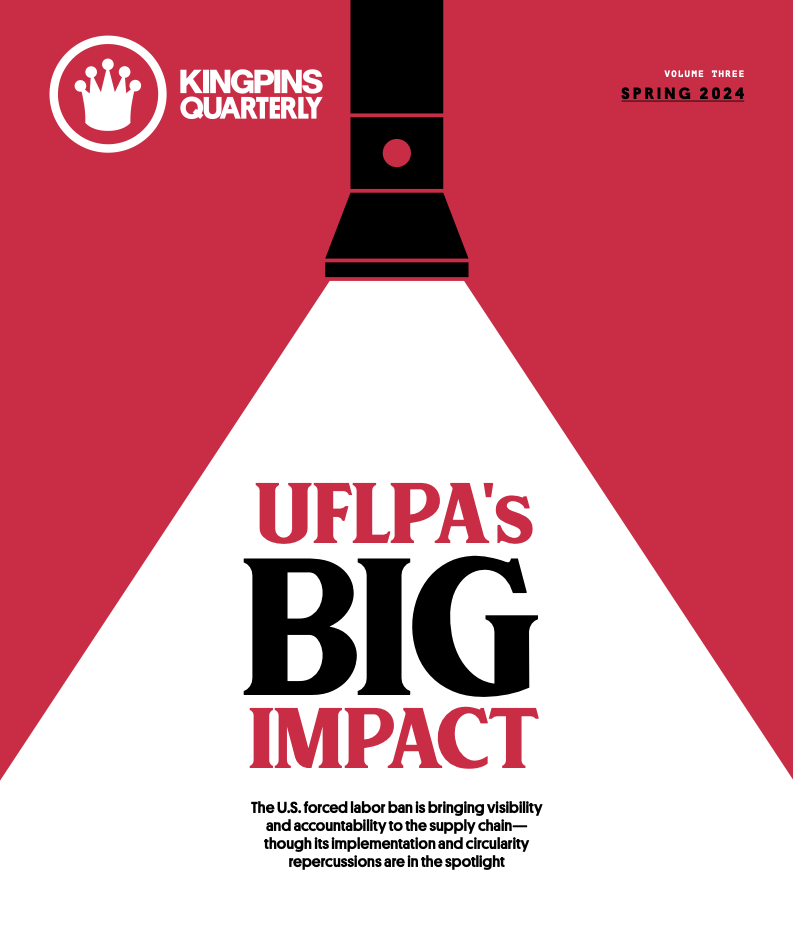While labor costs are increasing in many corners of the globe, skyrocketing inflation is robbing workers of a higher percentage of their earnings—thereby widening the gap between minimum wages and living wages.
A living wage, as defined by the Global Living Wage Coalition (GLWC), is the remuneration for a standard workweek by a worker to afford a decent standard of living to cover essential needs, such as food, water, housing, education, healthcare, transport, clothing and provision for unexpected events.
Living wages are not the standard in the denim industry. Minimum wages are the jumping off point, with salaries dependent on such factors as skills and availability and competition for workers. While some workers also receive benefits like child care and training, often these perks are offered at the factory owners’ discretion.

Though Mexico and China offer higher monthly minimum wages than the other countries Kingpins Quarterly reviewed, both nations rank among the lowest for meeting monthly living wages. China designates its minimum wages by province and looking at the entire country, the lowest minimum wage is $194 per month or $1.95 per hour and the highest is $370 per month or $3.70 per hour. Mexico has a daily minimum wage of $11.87 per day or $1.24 per hour because it is based upon a 48-hour work week, which equates to approximately $237 monthly. Specifically, an average salary in Mexico meets 37 percent of a living wage and in China an average salary meets 43 percent of a living wage in 2023.
Turkey has raised its minimum wage five times since 2020, however, these rates are still not keeping pace with the country’s explosive inflation. There has not been an updated living wage since 2021 due to the rising rates. Inflation is expected to continue through 2027, according to the International Monetary Fund prediction.
All eyes are on Bangladesh, the second largest exporter of garments in the world, which had the lowest monthly apparel worker wages from the countries Kingpins Quarterly reviewed, with wages averaging $71 per month. There, inflation hit 9.7 percent in 2023 with no increase to minimum wages through November. And even the 56 percent increase proposed by the government, which as of press time was set to take effect on December 1, isn’t enough according to workers’ rights groups. The result has been outrage and fatal clashes as workers fight for more money.

Closing the Gap
The solution isn’t simple, especially in a down market in which orders are anemic, and too few and far between.
Guido Schlossmann, president and Group CEO of virtual manufacturer Synergies Worldwide Sourcing, said even if the government in Bangladesh were to meet the demands for the requested 187 percent increase in minimum wages, it wouldn’t solve the problem. In fact, things could get worse.
“The consequence will be ultimately the supplier cannot ask for a price increase appropriate to the costing increase because of market dynamics. So, he will have no margin and eventually close down. That is something which is very real and on the table at the moment,” Schlossmann said. “I’m foreseeing a lot of factory closure in the next couple of months if this trend continues globally, in Turkey and China in Myanmar, everywhere. And then the people, they might have increased wages on paper, but no job.”
The answer to moving toward living wages, Schlossmann said, is higher prices at the register. “If today a pair of denim pants is purchased in Bangladesh for 30 percent less than a coffee at Starbucks, there must be something wrong,” he said.
It’s a sentiment that many in the industry hold but how to make the leap from today’s prices to prices that are commensurate with actual costs throughout the supply chain is the question. It’s especially hard to answer given the dominance of fast fashion, which has helped convince consumers that clothes should be cheap. And with cheap clothes, comes compromise. “If I was to produce a $5 or $6 pair of jeans, from anywhere, I would have to cut corners. The first thing I would cut corners on is the material. And then eventually, I would get to wages as well. It could end up being a factory where they don’t pay the overtime. It could be a factory where they have bonded labor. It could be a number of reasons because that’s how those corners are cut to get to $6,” said Zaki Saleemi, a 23-year veteran of sourcing in Asia and senior vice president of global sales for Material Exchange.
On the other end of the spectrum, Marco Vonrufs, general manager of Intertex, which owns a vertical production facility in Egypt, noted one retail partner in Germany increased prices by 10 euro and immediately saw sales drop. Rather than blame consumers, he said the industry must re-educate them. “We should teach people. The people should know when they buy something how much the workers are earning, how much this trouser is costing, how much their brands are earning because this is a problem,” Vonrufs said.
In the meantime, the cost of living continues to increase—for both factory workers and the consumers who buy the product.
“I think we’re way far away from any discussion on living wages at this stage. Living wages is a great aspiration but if we can just combat the current inflation in Bangladesh, Pakistan, India, Vietnam, wherever, that’s the first step. Inflation can only be curtailed by increasing the minimum wage,” Saleemi said.
“Insufficient Funds” ran in the Winter 2024 issue of Kingpins Quarterly. Read the issue here.




